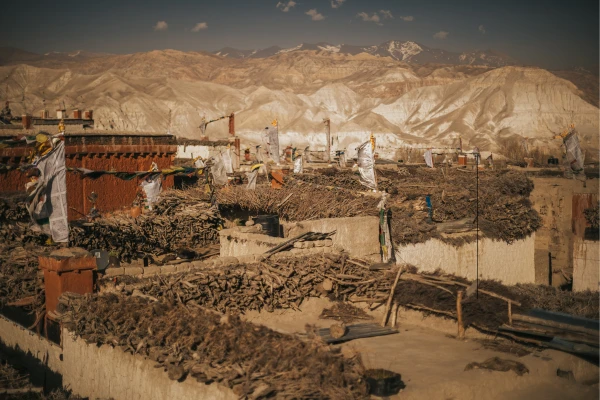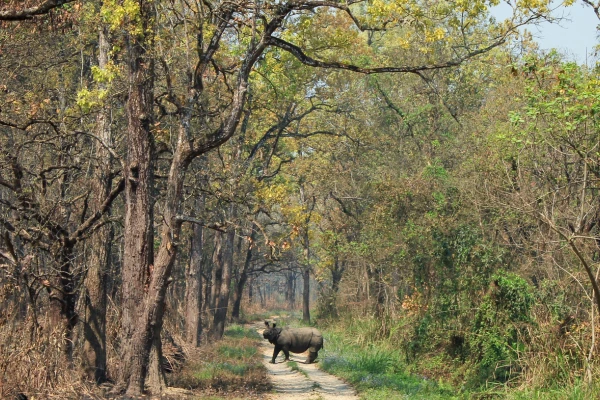Acute Mountain Sickness (AMS) is a health risk caused by the thin air in the atmosphere, mostly above 2500 meters. This infamous mountain syndrome has spoiled several trips and left trekkers dazzled and confused during their high altitude trekking in Nepal and elsewhere. AMS is also known as “Altitude sickness” or “high altitude pulmonary edema”.
What is Acute Mountain Sickness? – High Altitude Trekking in Nepal
Table of Contents
Acute Mountain Sickness (AMS) is a health risk caused by the thin air in the atmosphere, mostly above 2500 meters. This infamous mountain syndrome has spoiled several trips and left trekkers dazzled and confused during their high altitude trekking in Nepal and elsewhere. AMS is also known as “Altitude sickness” or “high altitude pulmonary edema”. Obviously, trekkers, hikers, mountaineers and/or anyone willing to go high must be familiar with this term and the ways to prevent it.
The good news is that, with a solid preparation, you will not only stay fit throughout your elevated journey, but also save thousands on preventing evacuations and medical expenses. In this article, we will discuss high altitude sickness in detail and precautions you can take to make your trip AMS free.
You might also like to read: Planning a Trip to Nepal
Acute Mountain Sickness – are you at a risk?
Everyone trekking in the high regions are at the risk of getting AMS due to the less amount of oxygen. However, not everyone gets it. Getting AMS can depend on your genetics, previous high altitude experience, physical fitness, age and rate of ascend (see below). As you can see, experience, physical fitness, and ascend rate are controllable factors.
Symptoms of Acute Mountain Sickness – is is normal to feel dizzy once in a while?
No, it’s not. If you are feeling nausea, confusion and dizziness while in the mountains, you have AMS unless proven otherwise. AMS should be considered seriously as soon as any warning sign is visible. Healthline, a popular health website, describes symptoms of Acute Mountains Sickness as follows:
Headache
Feeling sick /Vomiting
Fatigue / feeling drained
Shortness of breath
Sleeping disorder
Appetite loss
If unchecked, AMS can further lead to High Altitude Pulmonary Edema (HAPE) and/or High Altitude Cerebral Edema (HACE), which have mor severe effects. So, it is wise to take necessary steps to stop the sickness from getting any worse.
Prevention and Treatment of Altitude Mountain Sickness
Given the life threatening chances of HAPE and HACE, it is quite strange that Altitude Sickness can be avoided and/or prevented by acting as soon as the symptoms appear. Keep your body hydrated and avoid smoking and alcohols at any cost while climbing. Some of the prevention as well as effective treatment methods are listed below.
Acclimatization to prevent altitude sickness
During high altitude treks, it is important that one does not ascend too quickly, or trek too long in order to better adapt the environment. That’s one reason why our trekking itineraries consists of trekking for 4-6 hours per day and rest days at various points. For example, during the Everest Base Camp Trek, acclimatization is done at at least two points, Namche Bazaar and Kala Patthar. This technique helps the lungs adapt properly to the thin air.
Above the altitude of 10000 feet, ascend 1,000 feet per day and rest for a day for every 3,000 feet climb to acclimatize properly. Your itineraries must be designed in such a way. Read about some important Nepal Trekking FAQ’s that will give you more information regarding trekking in Nepal.
Medication can help slow down effects of AMS
For the signs of mild headache, stop climbing and take mild pain relievers. If the headache continues and more symptoms occur, it’s certain that AMS is the cause. Acetazolamide can be used before starting to descend to keep the trekker at ease.
Descending
If more than two symptoms of AMS shows up and there is significant difficulty, it’s wise to descend and take rest until you feel normal. In most of the times, the signs of AMS fades away in 1 or 2 days and a proper descend. Even with medication, it’s wise to descend when the symptoms show up.
Evacuation after Acute Mountain Sickness
In severe cases where descending is not possible, evacuation is needed. In high mountains, animals like horses are used to help trekkers climb down. In extreme cases, helicopter evacuation is done which is followed by a hospital visit in Kathmandu or the nearest city.
Getting a proper insurance
It is super important to have a proper insurance that covers against above mentioned risks before traveling in the mountains. Evacuation and treatments can be costly. So get yourself covered with a health and emergency evacuation insurance. This will ensure that you get the necessary help in time, and that you don’t end up spending all your savings or with debt.
Trekking forward – Don’t let AMS spoil your mountain experience in Nepal!
Regardless of the risk, trekking in the mountains is one of the most sought adventure by many. Each year, more than a million tourists visit Nepal, and many of them prefer trekking because of the natural experience and view of the highest mountains. In this sense, it is wise that we are familiar to the risks and be better prepared for our journey.
Further, there are many trekking routes that provide glorious views and experience with less altitude gain. For e.g. the Poon Hill Trek provides magnificent views, and getting AMS is very less likely. With experience, precautions and proper arrangement, you can definitely take yourself higher !
Browse several of our tours, treks and special deals in the mountains, or learn more about Hiking Adventure!





